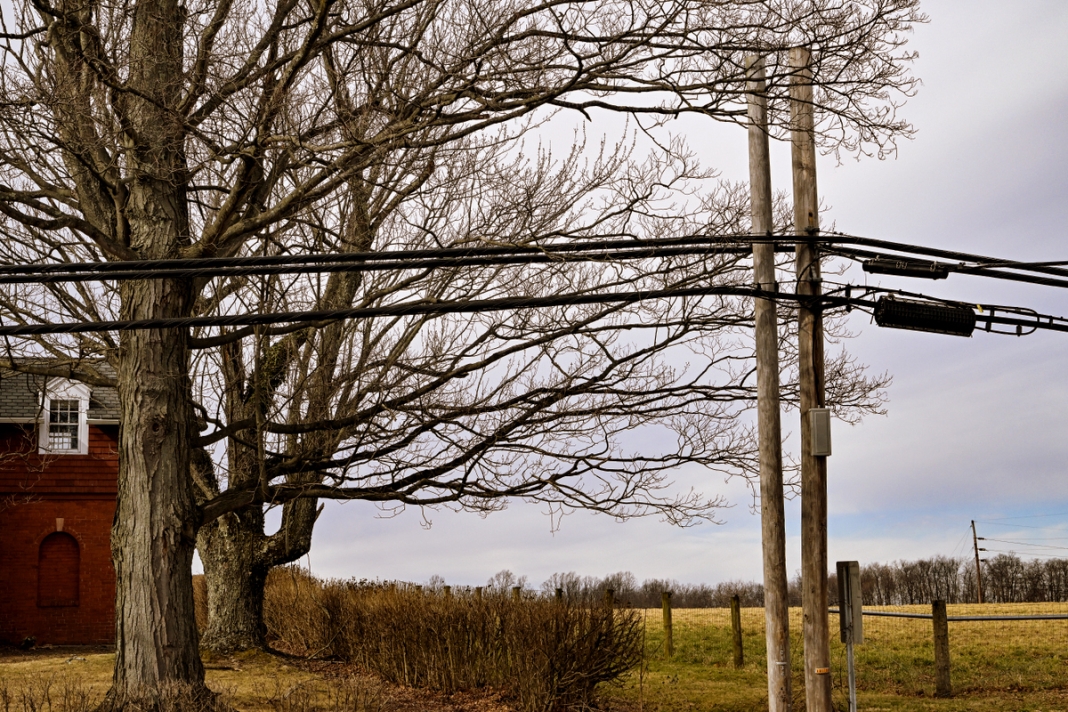MORGANTOWN, W.Va. — A West Virginia University urban forester is developing a method, with the help of artificial intelligence, to identify trees at risk of falling on power lines and causing blackouts.
According to Greg Dahle, associate professor of arboriculture and urban forestry at the WVU Davis College of Agriculture, Natural Resources and Design, downed trees are one of the most common causes of power outages, and electrical utilities spend the most maintenance money managing vegetation along the distribution lines.
“When trees grow into the power lines, they can cause shortages or outages when they fail,” Dahle said.
“Not only do we have a short duration outage, but it can also be longer because utilities have to get the power pole planted and then restring the lines. We’re talking 12 hours to a day or two before power is restored.”
Utility companies inspect the site of a tree failure and create a report on the incident. Dahle intends to assemble a database of these summaries from the Eastern Seaboard and, eventually, around the U.S.
Once data is compiled, he’ll use machine learning and other AI tools to analyze them for patterns among species and site conditions — like height and soil composition — that might help identify a potential problem. The work done at WVU could eventually lead to an expanded system for predicting trees at risk and power failures.
In addition to two grants from the TREE Fund’s Utility Arborist Research Fund program, Dahle received support from the American Electric Power Foundation for graduate student work on the three-year project.
He aims to connect with local utilities about what species are at risk and how managers can address potential problems. While it will take a lot of work by his doctoral student to combine the various tree failure databases, Dahle feels confident the AI analysis will yield valuable information on failure patterns.
Dahle will focus on urban forests — the trees and vegetation growing near where people live, work, and play.
“That can be the city and also the surrounding suburbs and rural area,” he said. “Urban foresters, including utility foresters, try to manage the trees for all the benefits we want out of them and minimize the negatives, like a tree falling onto your house or your car or blocking the roads.”
Urban forests offer benefits like shading homes in summer and blocking the winter wind. They also reduce stormwater flow, store carbon, and provide habitat for wildlife.
Urban forestry tries to maintain a vegetation-free area around power lines and remove trees at risk of failing and falling on distribution lines. This can be challenging in a heavily forested state.
“In West Virginia, it takes a long time to walk just the power line itself,” Dahle said. “A lot of outages are from trees that are outside the right-of-way, outside of the main easement. That can be 30 to 40 feet away from the centerline, and those are hard to identify because they’re not inside the easement. Utilities are always looking at better ways to identify trees before they fail.”
Failures can be static or dynamic. The former comes from the passive weight of ice and snow; the latter is usually the result of wind. Wind is the most significant factor in nationwide tree failures, especially with heavy precipitation, which can loosen the soil.
More significant storms and extreme weather events associated with climate change bring heavy rain that waterlog the soil. The wind that arrives on the back of the storms often brings trees down, which will become increasingly common.
“There’s higher likelihood that we’re going to have failure as we move deeper and deeper into climate change,” Dahle said.
Moreover, the outage size does not necessarily correspond to the size of the source, as was the case in 2003 when a single tree outside Cleveland failed. That, along with software issues and equipment failures, triggered a near-total blackout in much of the interconnected northeast, including New York City and Toronto.
The failure happened during the heat of summer when customers were drawing power for air conditioning. Parts of West Virginia experienced a brownout, a voltage drop in an electrical power system.
The average resident might see benefits from Dahle’s work, as well. Restoring power requires a lot of overtime and storm expenses, and utilities pass these costs on to the customer. In a heavily forested state, damages and repairs can be significant.
“We are the third most forested state,” Dahle said. “We’re putting power lines through large, expansive areas of heavy vegetation, heavy tree cover. It’s always going to lead to more failures.”
Jake Stump, director of WVU Research Communications, contributed this story.
Sign up to receive a FREE copy of West Virginia Explorer Magazine in your email weekly. Sign me up!



